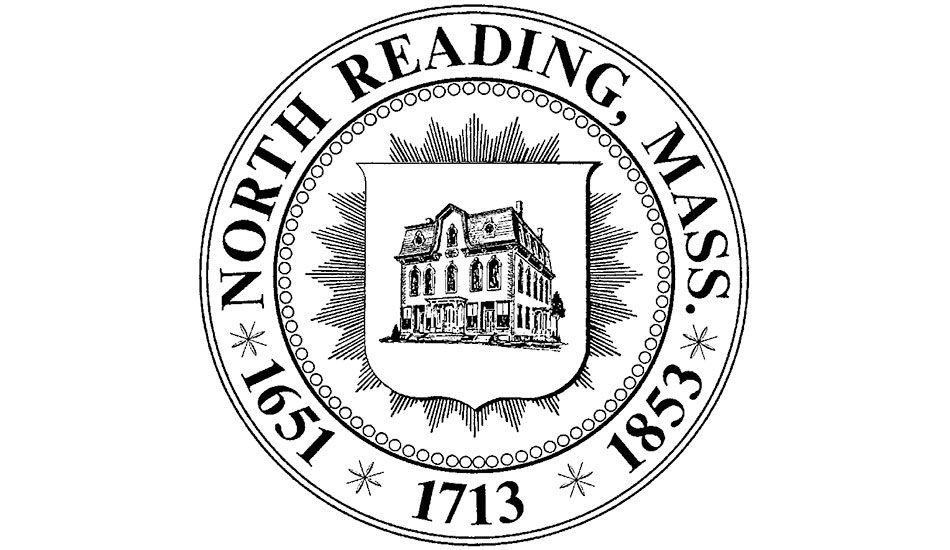By MAUREEN DOHERTY
NORTH READING — With three weeks remaining before the start of a new school year and 18 months into the global pandemic, COVID fatigue has taken hold everywhere, not just locally.
Town officials have emphasized their gratitude for the collaborative nature of the town’s response to the pandemic through the working group of local public health, safety and school officials that was created to meet on a weekly basis throughout the pandemic.
They discuss the trends in the case rates and how to respond to pandemic at all levels, from restaurant protocols and business closures in the early months to masking mandates and where to hold town meetings as well as staunchly advocating the Mass. DPH for a local vaccination site this past winter for the vulnerable elderly population when vaccines were hard to find.
At last Thursday’s virtual Board of Health meeting, Superintendent of Schools Dr. Patrick Daly thanked the BOH members for helping to facilitate a “real collaborative nature” between the schools and the town administration throughout this pandemic.
“It is not this way everywhere where the School Department gets to speak with the Health Department and we’re meeting regularly with Mr. Bracey and Michael Gilleberto, Chief Murphy, Chief Stats and Donna Hovey (the public health nurse)… I think we are very fortunate in North Reading,” Daly said.
BOH Chairman Gary Hunt was appreciative of Daly’s comments as he stressed how unusual it has been for his board to be meeting almost once a week or every other week for this length of time, but doing so demonstrates to him the level of concern they all have about the pandemic and its effect on public health.
Health Director Bob Bracey was satisfied with the increasing levels of vaccination rates among the various age groups in town to date and the relatively low numbers of new cases even with the delta variant entering the mix.
And when permission to take the masks off in most situations was granted at the end of May, there was a collective sigh of relief over the ability to breathe fresh air in the summer, until delta began to surge in other regions of the country and then emerged here but in much lower numbers. Now it appears that there are two factions growing in town on the use of masks, and both have valid concerns even though they occupy opposite sides of the spectrum on the issue
The issue that is dividing our town in particular and our society in general the most right now is whether or not children, staff and visitors to the town’s schools should be required to wear masks again. Should it be 100% of the time or never? Always when indoors or only if you haven’t been vaccinated or can’t tolerate a vaccine for medical reasons? The two groups have polar opposite opinions about which they are very passionate.
For many residents who spoke during Thursday’s virtual Board of Health meeting, the thought of putting a mask back on the face of their child once school begins for hours at a time is tantamount to child abuse and a detriment to the child’s mental health and psychological and emotional development. Equally strong feelings were expressed by many other parents at Monday night’s School Committee meeting but for the opposite reason — not requiring children to wear masks when returning to close quarters in school would be tantamount to endangering their children especially if they have regular contact with relatives who have compromised immune systems.
It is a no win situation for local officials. This fact was demonstrated by the fracture of opinion being expressed in the guidance provided at the state level by the Department of Elementary and Secondary Education (DESE) and the Mass. Dept. of Public Health (MDPH), which has a much looser set of guidance on masking for schoolchildren and in schools than does the federal Centers for Disease Control and Prevention (CDC).
Ultimately, these state and federal agencies have punted. If they provide “guidance” and “recommendations” then local agencies are given the freedom to look at the science and use it as a guide for where to go from here, since each community has a different set of risks.
It’s when guidance and recommendations are translated into black and white mandates (for example, the mandates established by the mayor of the Big Apple prohibiting non-vaccinated individuals from accessing numerous public accommodations by mid-September without proof of vaccination) that the fissures in our society are exposed.
Low rate of infection in summer
“We’re in a position where we saw in late June and early July almost no Covid cases. A lot of restrictions were lifted in late May. We were very optimistic going into the summer that it was going to continue. As we saw mask mandates come off… we were able to run our summer programs,” Daly said, adding, “Many students continued to wear masks and certainly those who were unvaccinated were much more likely to wear a mask.”
“It was not until later in the summer in very recent weeks that we’ve seen some resurgence of Covid 19. There were one to two cases in the program and we did watch that very closely. We did our contact tracing. We did have one staff member and one student that tested positive over that period.”
There were two other programs housed in the NRPS but not run by the local district “where there were positive cases” in late July, which are being monitored closely, he said. Daly added that this is the time of year when the School Committee will be making decisions on what the start of the school year will look like (see related story).
“If the DOE put out a mask mandate then we would follow that,” he told the board.
However the state Dept. of Public Health (DPH) current guidance contains four main components, including a federal mandate requiring everyone to wear a mask when on school buses and when they visit a school nurse’s office. Therefore, Daly stressed that even if students and staff who are fully vaccinated are allowed not to wear masks during the school day or at school functions, the NRPS would still have a “culture” that would require everyone to have a mask in their pocket or backpack available for use when required.
“We feel with that strong recommendation these other pieces make sense. At the elementary level, for those that are unvaccinated the guidance recommends that all students in kindergarten through grade 6 wear a mask when indoors,” Daly said, noting that exceptions will be made for those students with medical conditions.
The NRPS will also require any unvaccinated student in grades K-12 to wear a mask while also allowing any student who chooses to wear a mask even if vaccinated to feel comfortable about making that choice as well.
Masks may be removed when all students are outdoors and when eating indoors. This is important, Daly said, because if they had to impose “distancing requirements’’ at lunch it would be virtually impossible to have all students eating together.
But with safety being a top priority, they are currently planning to space students out “every other seat” during lunch with assigned seating, with their friends. But the six-foot requirement has been removed.
Although it would be “much easier” if the DESE/DPH guidance simply required everyone to wear masks again, Daly said the approach currently being taken “allows nuance” for the different situations that arise in each community.
If at any time they were getting indications of any transmission occurring in the schools “obviously things would have to change.”
Another consideration is the fact that there is no hybrid model available this coming year, therefore the “guidance around quarantining is very different.” Without a remote option, students who test positive for Covid 19 would be treated just like any other sickness of a communicable disease, like chicken pox and they would have to stay home.
Daly explained that last year, those in close contact to a Covid-positive person but without symptoms would be learning at home full time for 14 days in quarantine. This year they are looking into providing an option for “test and stay.” This means a rapid 15-minute test would be done and if the person was positive their isolation would begin immediately. If they tested negative they would not have to quarantine. But before school for the next five days the student would have a test taken in the nurse’s office. If they were negative, they could go to class that day; if they were positive then they would have to go home and isolate.
According to Health Director Bob Bracey, the vaccination rates for children between 12-14 is 53% and in the low 70% among 15 -19-year-olds.
Another change this year will be less emphasis on cleaning touch-point surfaces as the science on transmission has changed to being more person to person and far less from touching the same surface as someone with Covid, Daly said.
Select Board member Stephen O’Leary, who is the liaison to the Board of Health, offered this observation after the 90-minute meeting: “I think the input received tonight is important and I admire the way you handled it. You have the board’s and administration’s support for the time you’ve put into collaboration for the first 18 months, and I encourage you to continue in the same methodology.”
Hunt said, “We need to hear this. We, all on this call, thought we were over the hump and it is back. Everyone is weary and tired of it and our tolerance has taken a bit of a drop… we can use all the support we can get.”
The next Board of Health meeting will be Thursday, August 26 at 7 p.m. which will give them the opportunity to issue any guidance they feel is necessary relating to the reopening of school on Sept. 8.





